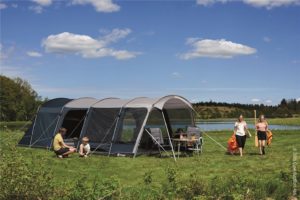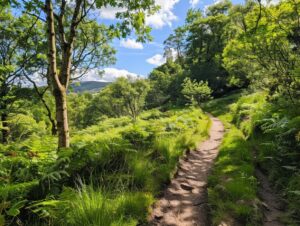
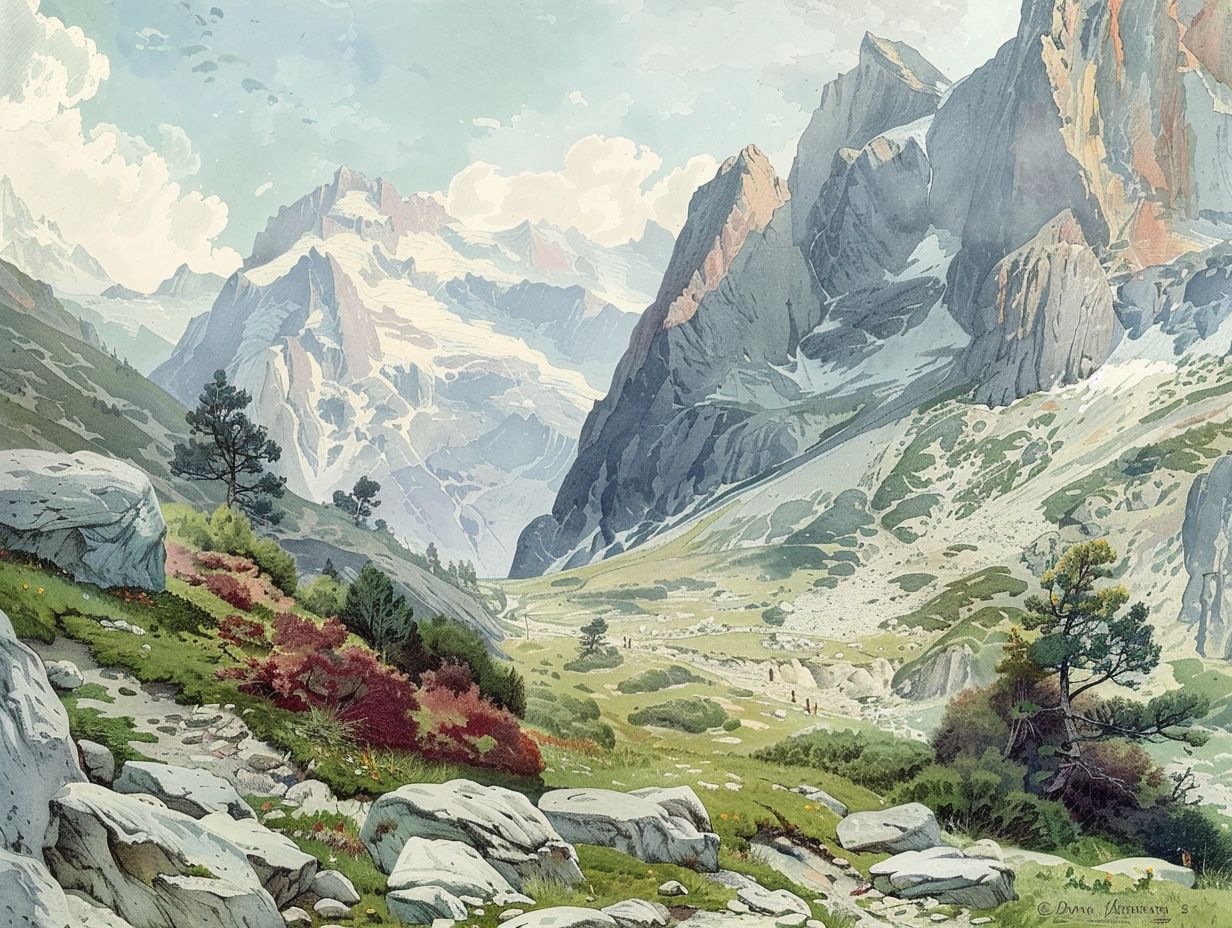
Vaibhav
- Categories: Hiking
Looking to take your rock climbing skills to new heights?
The UK offers some of the most stunning and challenging hikes for rock climbing enthusiasts. From the rugged terrain of the Lake District to the picturesque landscapes of the Peak District and the Scottish Highlands, there are endless opportunities to test your skills.
Explore the top rock climbing spots in the UK, along with tips to ensure a successful and enjoyable experience.
Grab your gear and get ready for an adventure unlike any other!
Key Takeaways:

- The best UK hikes for rock climbing enthusiasts include Scafell Pike, Stanage Edge, and Ben Nevis.
- Proper physical and mental preparation, following safety techniques, and leaving no trace are essential for a successful rock climbing hike.
- The Lake District, Peak District, and Scottish Highlands offer breathtaking views and challenging climbs for rock climbers of all levels.
The Best UK Hikes for Rock Climbing
The United Kingdom presents a selection of exceptionally captivating rock climbing opportunities, featuring routes that offer challenges suitable for climbers of varying skill levels.
These routes lead climbers through picturesque landscapes and rugged terrains, thereby establishing the UK as an essential destination for individuals seeking to integrate hiking with rock climbing pursuits.
The Lake District
The Lake District, renowned for its tranquil natural beauty, presents exceptional climbing opportunities for adventurers seeking a blend of serenity and challenge in their climbing pursuits.
The rugged terrain of the Lake District offers a varied array of rock formations for climbers to explore, encompassing traditional crags like Shepherd’s Crag in Borrowdale and Scafell Pike for climbers of higher proficiency. Well-frequented routes such as the demanding Direct Route on Great Gable or the iconic Napes Needle on the same peak entice climbers from across the globe.
The region’s abundant cultural legacy, drawing inspiration from esteemed poets like Wordsworth and Coleridge, bestows an additional layer of allure to the climbing experience, further enhanced by the stunning panoramic vistas that unfold with each ascent.
1. Scafell Pike
Scafell Pike, the highest peak in England, presents climbers with a strenuous ascent that culminates in expansive panoramic views from the summit. Various routes are at the disposal of climbers venturing up Scafell Pike, each presenting a mix of challenges and scenic beauty.
Among these options, the Corridor Route stands out as the most favoured, offering a relatively straightforward path from Wasdale Head to the summit.
Conversely, for climbers with a taste for more demanding endeavours, the renowned Lord’s Rake presents a steep and rigorous ascent that demands considerable physical and mental prowess.
Within the climbing community, individuals share narratives of their conquests on Scafell Pike, finding common ground through shared accomplishments and empathising over the arduous climbs.
Amidst the awe-inspiring landscape and challenging terrain, a sense of camaraderie flourishes on this magnificent peak.
2. Helvellyn
Helvellyn is widely recognised for its awe-inspiring climbing routes that present climbers with both technical intricacies and breathtaking panoramas. The most frequented climbing routes on Helvellyn encompass Striding Edge, Swirral Edge, and the traditional horseshoe route.
Striding Edge stands out as a thrilling ridge walk characterised by steep drops on either side, delivering a challenging yet invigorating experience. Conversely, Swirral Edge offers a marginally less demanding ascent while affording climbers striking views of Red Tarn below.
Helvellyn caters to climbers of all skill levels, accommodating beginners seeking to build experience as well as seasoned climbers in pursuit of a formidable challenge.
The terrain is adorned with prominent features such as Red Tarn, a glacial lake, and the formidable cliffs of Nethermost Pike, further enhancing the appeal of scaling this iconic peak.
3. Great Gable
Great Gable is distinguished in the climbing community of the Lake District for its varied climbing routes and the element of adventure it presents to climbers.
Several well-known climbing routes on Great Gable are tailored to a range of skill levels, accommodating both novice and experienced climbers.
The topography of this peak comprises steep rock faces, exposed ridges, and demanding scrambles, delivering an exhilarating experience for individuals seeking a combination of technical climbing and awe-inspiring panoramas.
Climbers have the opportunity to explore routes such as Napes Needle, Westmorland Crags, and Gable Crag, each presenting distinct challenges and spectacular views.
Plus its natural allure, Great Gable holds historical significance in the realm of climbing, having been a favoured destination for early pioneering climbers and possessing a profound cultural importance within the climbing community.
The Peak District
The Peak District stands out as a premier climbing destination in the United Kingdom, renowned for its iconic limestone walls and dynamic climbing scene that attracts enthusiasts from across the globe.
Climbing in the Peak District presents a diverse array of rock formations, ranging from the traditional gritstone edges of Stanage Edge to the demanding limestone crags of Stoney Middleton. Well-known climbing spots like Burbage Valley and Froggatt Edge not only offer picturesque views but also a wide selection of routes suitable for climbers at various skill levels.
The close-knit community of climbers in the Peak District adds to its distinct allure, as local climbers frequently exchange advice and recommendations with visitors. With a rich climbing heritage and meticulously maintained crags, the Peak District stands out as an obligatory destination for any climbing aficionado.
1. Stanage Edge
Stanage Edge is renowned for its distinctive routes and varied climbing locations, establishing itself as an essential destination for climbers visiting the Peak District.
Whether individuals are novice climbers looking to hone their skills on less challenging ascents or experienced climbers seeking rigorous tests, Stanage Edge offers a plethora of routes tailored to diverse proficiency levels.
The site accommodates both traditional climbing, where climbers set their own protective gear, and sport climbing, featuring pre-installed bolts for enhanced safety measures, thereby catering to a wide spectrum of climbers.
The presence of unique features such as gritstone edges and cracks contributes to the distinctiveness of each climbing experience, rendering it truly memorable.
Notable landmarks like High Neb and the Popular End further augment the allure of climbing at Stanage Edge, adding to the site’s overall charm and appeal.
2. The Roaches
The Roaches present climbers with a variety of climbing areas set amidst rugged landscapes, offering abundant climbing opportunities catering to individuals of all skill levels. Ranging from the traditional routes found on Hen Cloud to the more demanding gritstone edges on the Roaches, climbers can test their abilities on diverse terrains.
The sandstone cliffs provide a range of angles and features, enabling climbers to engage in a blend of traditional and sport climbing activities. Prominent challenges include manoeuvring through cracks, overhangs, and delicate balancing manoeuvres.
The scenic views from the summit offer climbers a breathtaking backdrop, enhancing their overall experience. The climbing community often commends The Roaches for its distinctive rock formations and the sense of camaraderie shared among fellow climbers in this picturesque environment.
3. Kinder Scout
Kinder Scout introduces a sense of excitement to any climbing expedition, often enhanced by opportunities for wild camping in its vast moorlands.
Derived from the German term ‘Kinder,’ signifying ‘children,’ Kinder Scout presents a variety of climbing routes suitable for both novices and seasoned climbers. Among these routes, the Pennine Way is particularly renowned for offering breathtaking vistas of the Peak District National Park.
The distinctive allure of Kinder Scout lies in its rugged terrain and capricious weather conditions, rendering it an exhilarating yet challenging endeavour for those in pursuit of a genuine wilderness escapade.
Engaging in wild camping within this region allows individuals to fully immerse themselves in the natural environment, amidst hills adorned with heather and the serene magnificence of the Dark Peak.
While traversing this ancient landscape, individuals have the opportunity to discover the profound historical importance of Kinder Scout, celebrated for its involvement in the mass trespass of 1932, a pivotal event in the access rights movement in the United Kingdom.
The Scottish Highlands
The Scottish Highlands present exceptional climbing opportunities that boast majestic cliffs and breathtaking natural beauty, appealing to climbers in search of both challenge and tranquillity in their outdoor pursuits.
The varied topography of the region offers a spectrum of climbing experiences, ranging from craggy sea cliffs along the coastline to rugged mountain peaks further inland. Climbers have the opportunity to challenge themselves on traditional rock climbs, bouldering routes, and even ice climbing during the winter season.
The climbing culture in the Scottish Highlands is deeply ingrained in a spirit of exploration and environmental consciousness.
Prominent climbing destinations such as Ben Nevis, the highest mountain in the British Isles, and the renowned Old Man of Hoy sea stack draw climbers from across the globe, providing not only physical challenges but also awe-inspiring views of the surrounding landscapes.
1. Ben Nevis
Ben Nevis, known as the highest mountain in the UK, boasts a collection of renowned climbing routes that both challenge and inspire climbers.
Various routes are available on the mountain, accommodating climbers of diverse skill levels. The Pony Track, suited for beginners, contrasts with the more demanding Tower Ridge and CMD Arete, which cater to experienced climbers in search of heightened excitement.
Climbing Ben Nevis necessitates a commendable degree of physical fitness and endurance, particularly for the more arduous ascents characterized by steep sections and exposed ridges.
The mountain’s allure lies in the sense of achievement and breathtaking vistas that accompany the conquering of Ben Nevis, rendering it a coveted goal for adventurers exploring the Scottish Highlands.
2. The Cairngorms
The Cairngorms provide climbers with an adventure characterised by tranquillity, offering a range of climbing areas set amidst stunning natural landscapes. Exploring the climbing routes in The Cairngorms reveals a diverse array of options suitable for climbers of all skill levels.
From challenging gullies to technical ridges, the terrain in this region presents an exhilarating challenge for those in search of adrenaline-pumping ascents.
Climbers may encounter unique features such as the iconic Shelter Stone Crag or the granite tors scattered throughout the landscape, which add an additional element of excitement to the climbing experience.
Feedback from the climbing community frequently underscores the sense of achievement and awe-inspiring vistas that accompany a successful climb in The Cairngorms.
3. The Isle of Skye
The Isle of Skye is well-known for its remarkable climbing locations that offer climbers a truly distinctive and unforgettable experience. With its striking landscape of towering cliffs, rugged mountains, and sea cliffs, Skye presents a diverse selection of climbing routes suitable for climbers of varying skill levels.
From traditional ridge traverses like the Cuillin Ridge to demanding sea stack climbs such as the Old Man of Storr, adventurers can discover routes that challenge their abilities and provide them with breathtaking views of the surrounding scenery.
The mystical ambiance of Skye, characterised by its mist-covered peaks and ancient geological formations, further enhances the appeal of climbing in this captivating setting.
Tips for a Successful Rock Climbing Hike

Embarking on a rock climbing expedition requires careful preparation and thorough knowledge to ensure a successful, secure, and fulfilling experience.
Prepare Physically and Mentally
Adequate preparation, both physically and mentally, is imperative when facing the challenges of rock climbing to ensure a gratifying experience.
Enhancing strength and endurance through targeted exercises such as pull-ups, planks, and squats can notably elevate a climber’s performance.
Moreover, mental fortitude plays a pivotal role in conquering fears and uncertainties when navigating steep cliffs and unpredictable terrains. Techniques like visualisation and meditation can assist climbers in maintaining focus and composure during high-pressure situations.
Common obstacles like acrophobia or physical fatigue can be effectively managed through incremental exposure therapy and adequate rest intervals during training sessions. By integrating a comprehensive training regimen that encompasses both physical and mental aspects, climbers can enhance their likelihood of success and enjoyment during their climbing endeavors.
Stay Safe and Follow Proper Techniques
Adhering to proper climbing techniques and safety measures is paramount to minimise the risk of injuries and optimise the outcome of a climbing excursion.
One fundamental safety protocol in rock climbing involves the consistent utilisation of a harness and helmet. These essential pieces of equipment serve to shield individuals in the event of a fall or rock dislodgement.
During belaying, it is imperative to uphold effective communication with one’s climbing partner and employ appropriate hand signals to ensure seamless coordination. Furthermore, it is critical to routinely assess climbing gear for indications of deterioration, underscoring the significance of prioritising safety at all times.
Familiarising oneself with prevailing weather conditions and route particulars can facilitate well-well-considered choices and contribute to a successful and uneventful climbing endeavour.
Leave No Trace
The adherence to the Leave No Trace principle holds significant importance in safeguarding the environment and ensuring the preservation of climbing areas in their pristine state for future generations.
By adhering to ethical climbing practices and minimising their environmental footprint, climbers assume a pivotal role in conserving the natural allure of these landscapes. It is imperative for climbers to exhibit mindfulness in their actions and to depart without leaving any trace behind while exploring and relishing the outdoor environment.
Embracing sustainable practices, such as properly disposing of waste, adhering to designated routes, and refraining from disturbing wildlife, can effectively reduce the adverse impacts of climbing activities on the environment.
The climbing community’s unwavering dedication to advocating for sustainability and enlightening fellow climbers on Leave No Trace principles is essential for cultivating a culture of environmental stewardship within the climbing sphere.
Enjoy the Experience
The primary objective of any rock climbing excursion is to savour the journey, embrace the adventure, and appreciate the natural splendour that surrounds the climbers.
One method by which climbers can enrich their overall enjoyment of the ascent is by concentrating on the positive elements of the experience. This includes acknowledging the sense of achievement that accompanies scaling new heights or mastering challenging routes.
Additionally, taking a moment to marvel at the magnificent landscapes that unveil themselves, providing a stunning backdrop to the climbers’ ascent. Furthermore, treasuring the camaraderie established with fellow climbers, deriving support and encouragement throughout the journey.
By remaining cognisant of these facets, individuals can foster a more fulfilling and rewarding climbing experience.
Frequently Asked Questions
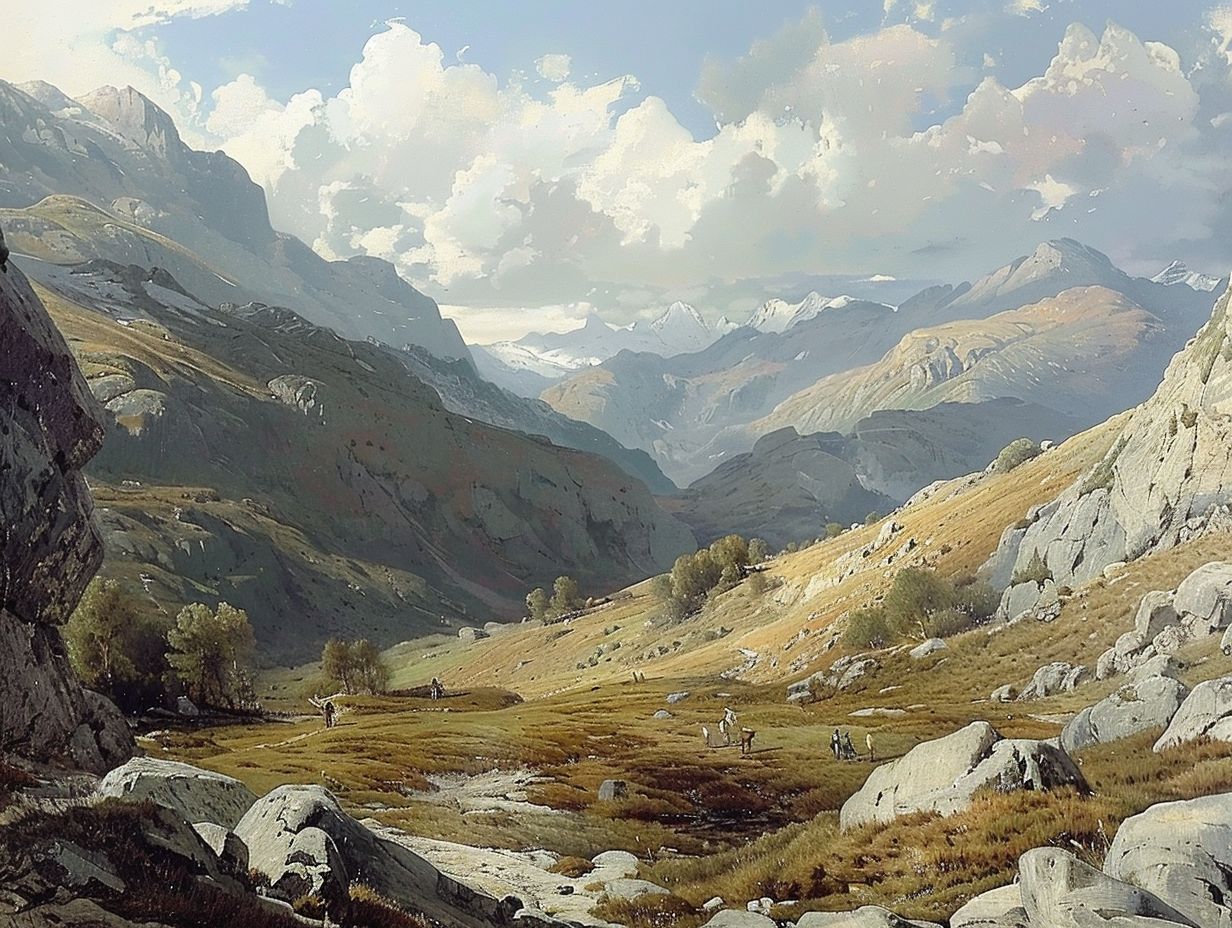
What are some of the best UK hikes for rock climbing enthusiasts?
Some of the best hikes for rock climbing enthusiasts in the UK include The Peak District, Snowdonia National Park, and the Lake District.
What makes these hikes ideal for rock climbing?
These hikes offer a variety of rock types and routes suitable for all skill levels, as well as stunning scenery and challenging terrain.
Are these hikes suitable for beginners?
While some of the routes may be more challenging, there are also plenty of beginner-friendly routes available in these areas, making them suitable for all levels of climbers.
Do I need to bring my own climbing gear?
Yes, it is important to bring your own gear when hiking and rock climbing in the UK. Make sure to pack all necessary equipment, including ropes, harnesses, and climbing shoes.
Are there any guided tours available for these hikes?
Yes, there are many guided tours and climbing schools available in these areas for those looking for professional instruction and guidance while hiking and climbing.
What are the best times of year to hike and climb in these areas?
The best times of year for hiking and climbing in the UK vary depending on the location, but generally the summer months offer the best weather and conditions for these activities.

Share:
By submitting your email address, you are agreeing to receive marketing emails from theexpertcamper.co.uk.
We’ll never share your email address and you can unsubscribe at any time. Privacy policy
Related Posts
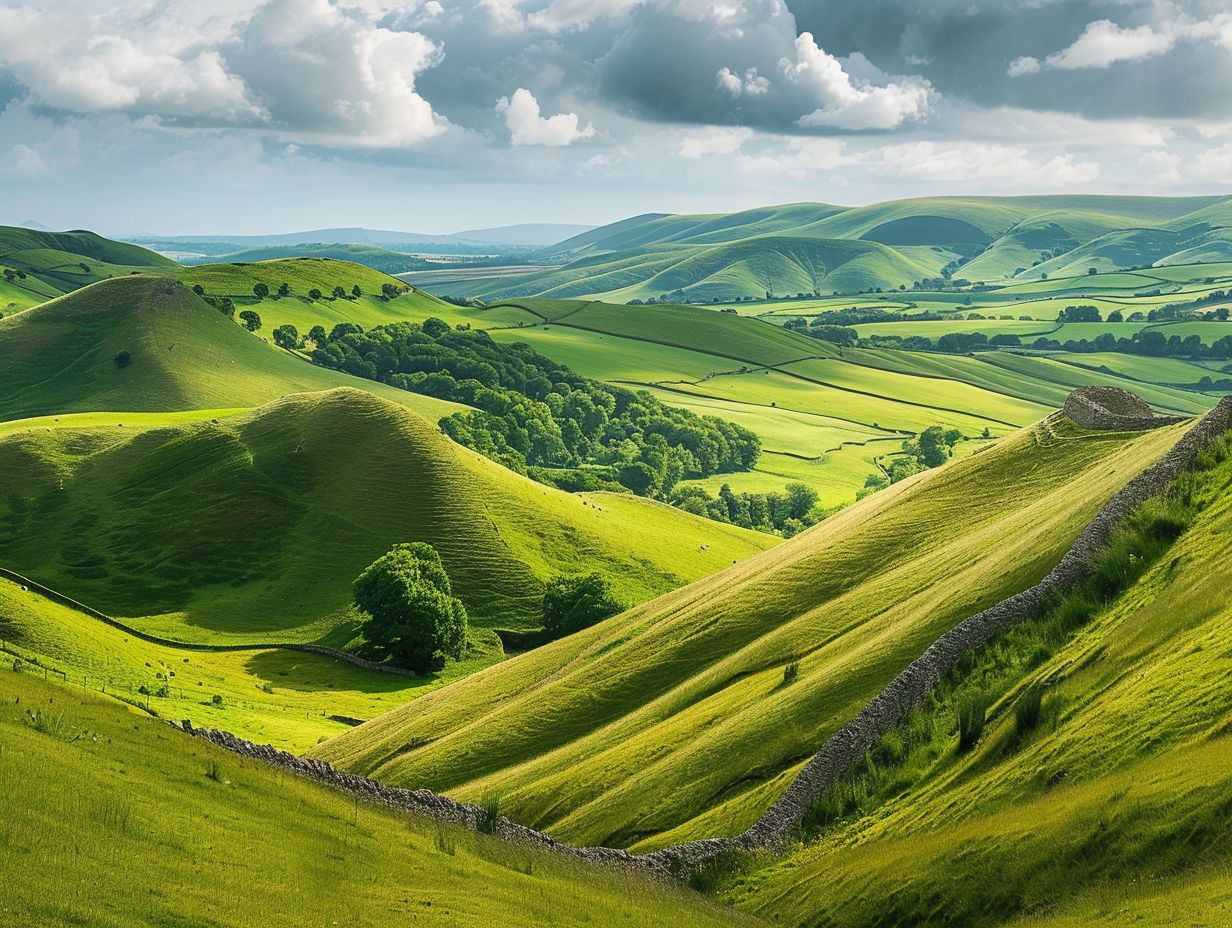
A Seasonal Guide To Hiking In The Peak District
Are you ready to lace up your hiking boots and explore the stunning landscapes of the Peak District? This seasonal guide will take you through
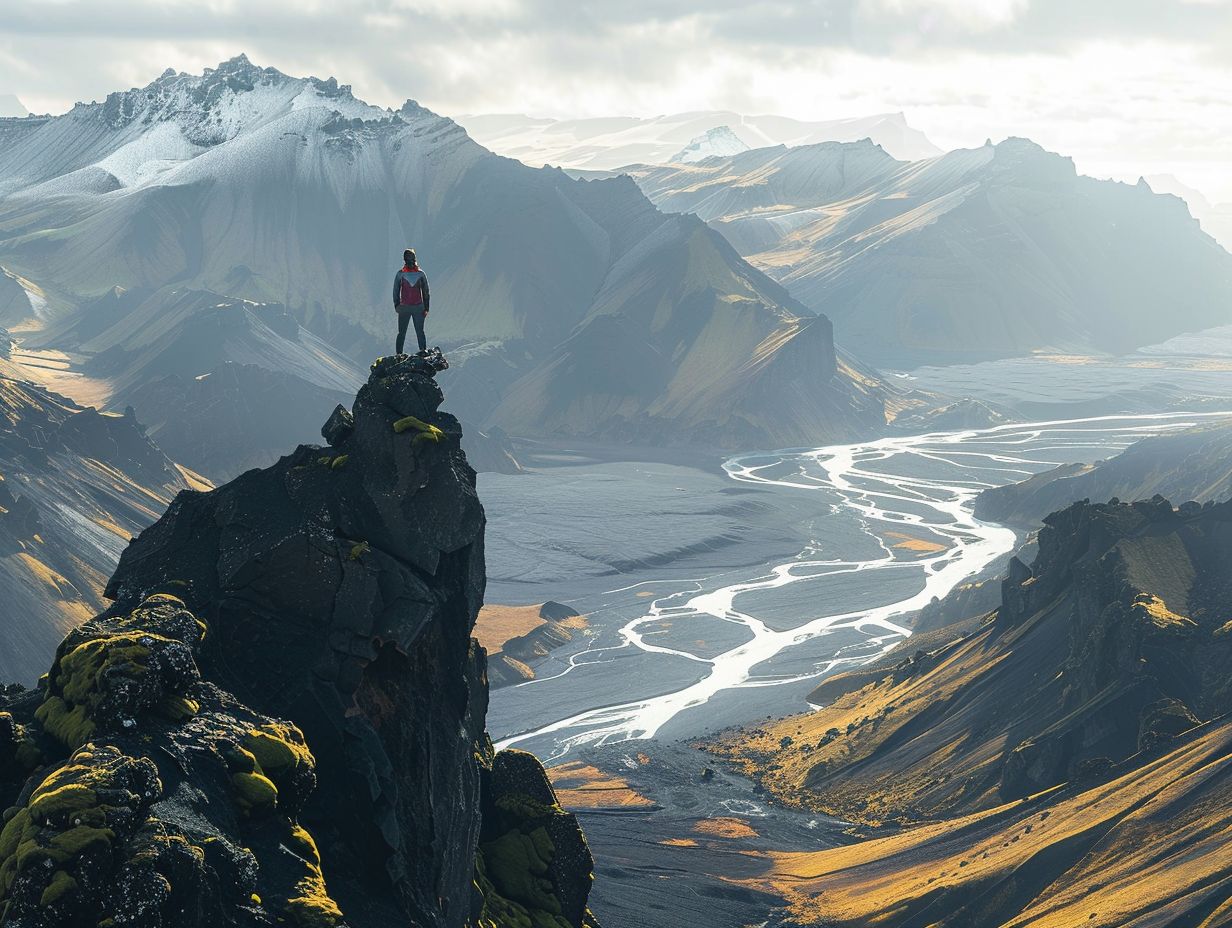
Hiking Challenges Preparing For Your First Ultrahike
Are you ready to take your hiking adventures to the next level? Ultra-hiking offers a unique combination of physical and mental challenges, breathtaking scenery, and
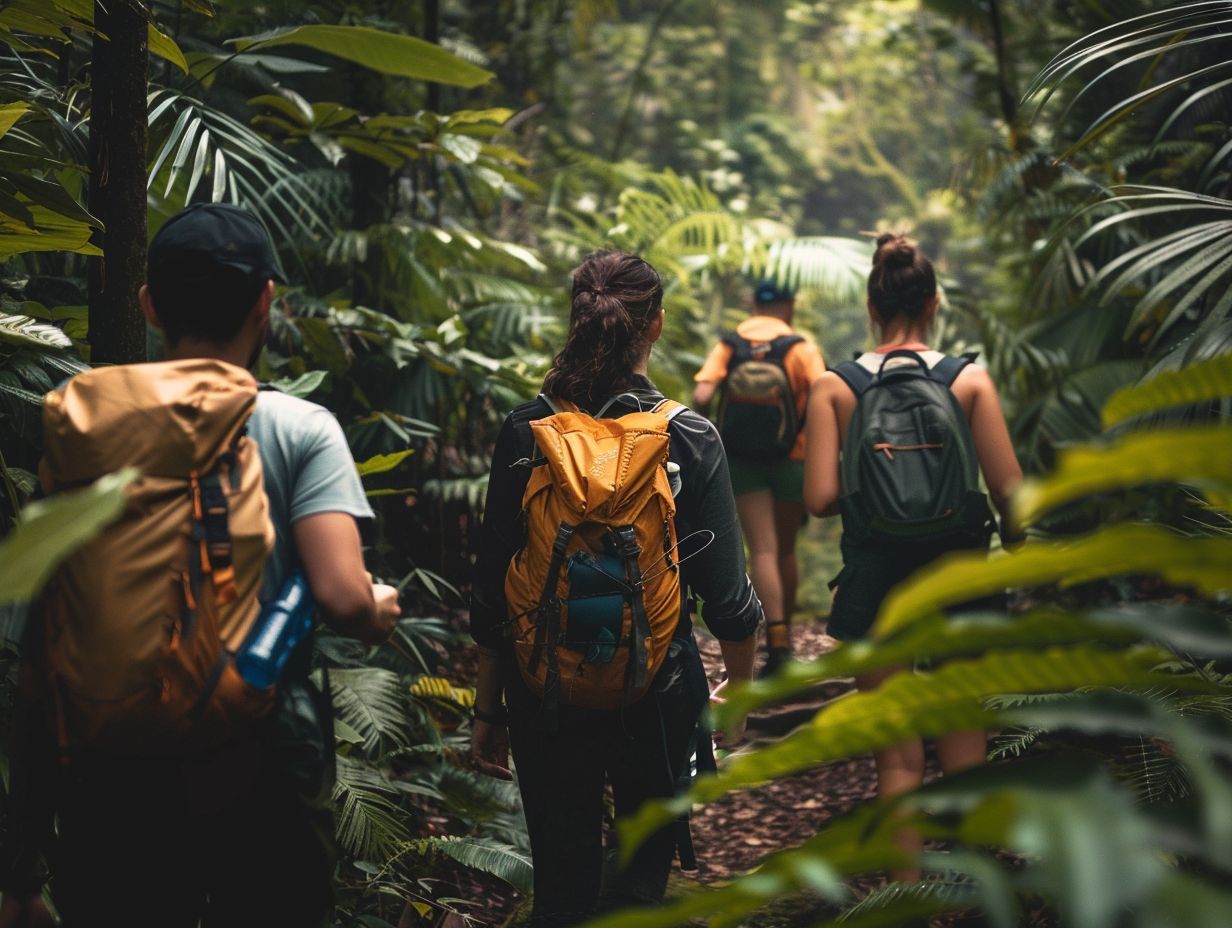
Ecofriendly Hiking Tips For Sustainable Adventures
Are you an outdoor enthusiast looking to minimise your impact on the environment while enjoying the great outdoors? Eco-friendly hiking is the perfect solution! We
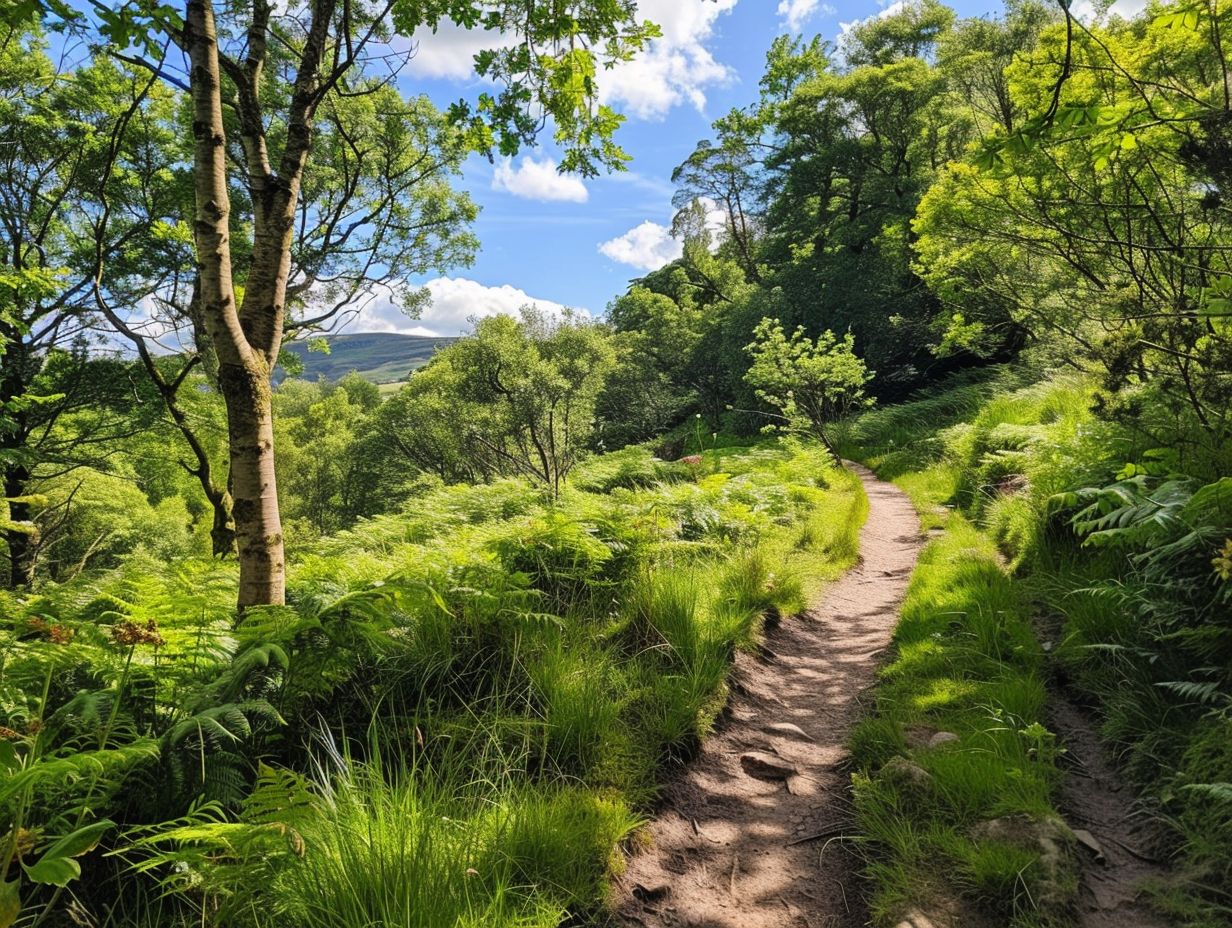
The Best Hiking Trails For Experiencing UK Wildlife
When exploring the picturesque hiking trails of the UK, you can expect to encounter a diverse array of wildlife. From majestic birds soaring overhead to
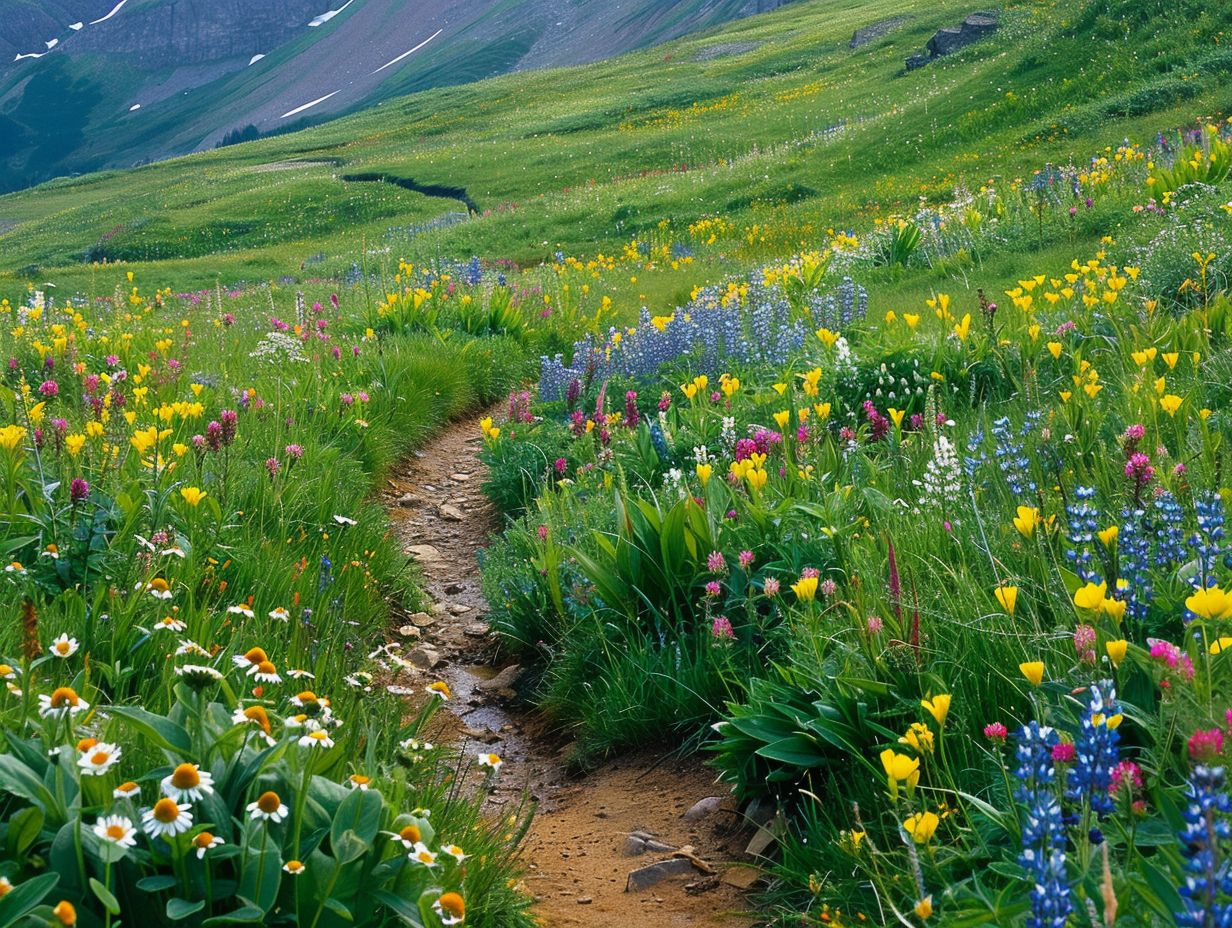
Wildflower Walks The Best Trails For Nature Lovers
Are you a nature lover looking to embark on a wildflower walk? Explore the best trails for wildflower walks, including [Trail Name 1], [Trail Name



